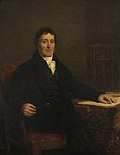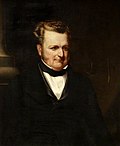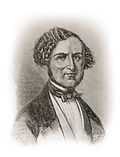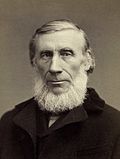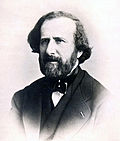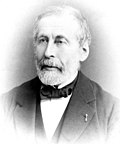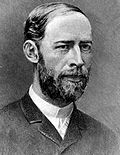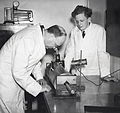| Rumford Medal | |
|---|---|
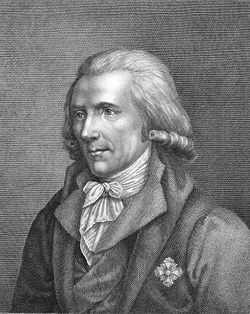 Count Rumford (Sir Benjamin Thompson), for whom the award is named. | |
| Awarded for | "outstanding contributions in the field of physics" [1] |
| Date | 1800 |
| Country | |
| Presented by | Royal Society |
| Website | royalsociety.org/medals-and-prizes/rumford-medal |
The Rumford Medal is an award bestowed by the Royal Society for "outstanding contributions in the field of physics". The award is named in honour of British scientist Sir Benjamin Thompson, Count Rumford, who is noted for his works on thermodynamics and for establishing the Royal Institution. The award was created in 1796 after Thompson transferred £1,000 to the Royal Society in stocks, instructing the latter to grant the awardee the fund's interest as a premium. Thompson was awarded the inaugural award in 1800. [2]
Contents
The award initially consisted of two medals, one each in silver and gold, struck in the same die. [3] This was later replaced with a single medal made of silver gilt. The medal is awarded with a cash prize of £2,000. [4] British painter Robert Smirke created the original design of the medal. The diameter of the medal is 3 inches (7.62 cm). The obverse featured a tripod altar with a flame upon it, circumscribed by a Latin inscription from Lucretius' poem De rerum natura "Noscere quae vis et causa". The reverse had the Latin inscription "Proemium optime merenti ex instituto Benj. a Rumford, S.R.I. Comitis: adjudicatum a Reg. Soc. Lond." surrounded by an ornamental border of leaves. [5] This design was discontinued in 1863. As of 2024, the obverse of the medal has a portrait of Thompson, surrounded by the Latin inscription "Beniamin Ab Rvmford S. Rom. Imp. Comes Institvit" ("Benjamin Rumford, Count of the Holy Roman Empire, founded this"), with the Roman numeral MDCCXCVI (1796) on the exergue. The reverse has the Latin inscription "Optime In Lvcis Caloqisqve Natvra Exqvirena Merenti Adivdicat Soc: Reg: Lond." ("The Royal Society of London awards this to one outstandingly deserving in investigating the nature of light and heat") inscribed within a wreath of oak and laurel leaves bound with ribbons. [6] [7]
All citizens or residents of the Commonwealth of Nations or the Republic of Ireland for more than three years are eligible for the medal. Candidates for the medal are selected by the Royal Society Council on the recommendations of the Physical Sciences Awards Committee. [1] Ten times during the early 19th century, no medals were awarded due to the unavailability of suitable candidates or political considerations of the Royal Society Council. [2] [8]
Since its inception, the medal has been granted to 108 scientists. It has been awarded to citizens of the United Kingdom sixty-seven times, [a] France fourteen times, Germany seven times, [b] the Netherlands seven times, Sweden four times, the United States thrice, Italy twice, Hungary twice, [c] and once each to citizens of Australia, Belgium, Luxembourg, Mexico and New Zealand. The medal has been awarded to multiple individuals twice: in 1896, to Philipp Lenard and Wilhelm Röntgen and in 1918, to Charles Fabry and Alfred Perot. From 1800 to 2018, the medal was awarded biennially; since then it has been awarded annually. The most recent recipient is British physicist Tony Bell, who received it in 2024. British academic and engineer Polina Bayvel is the only female recipient. [9]


